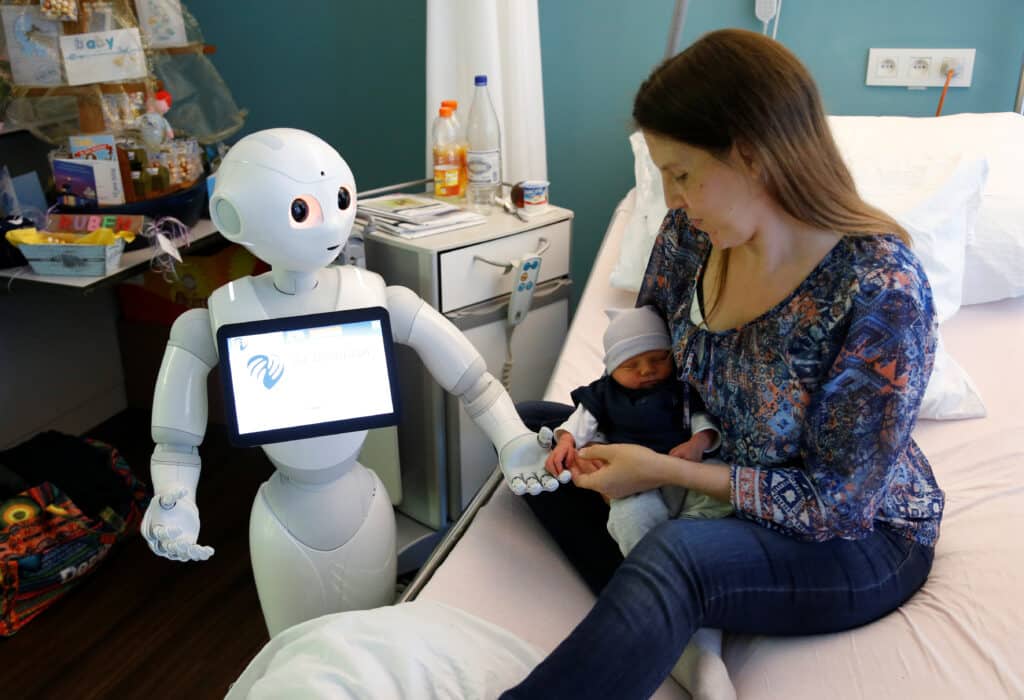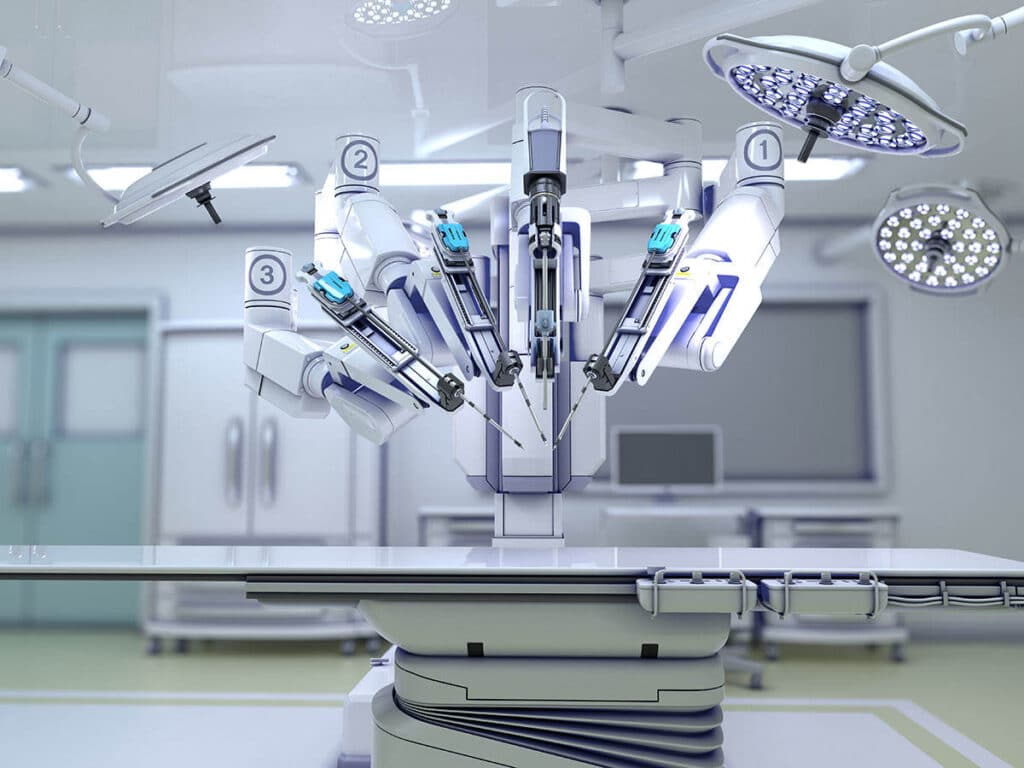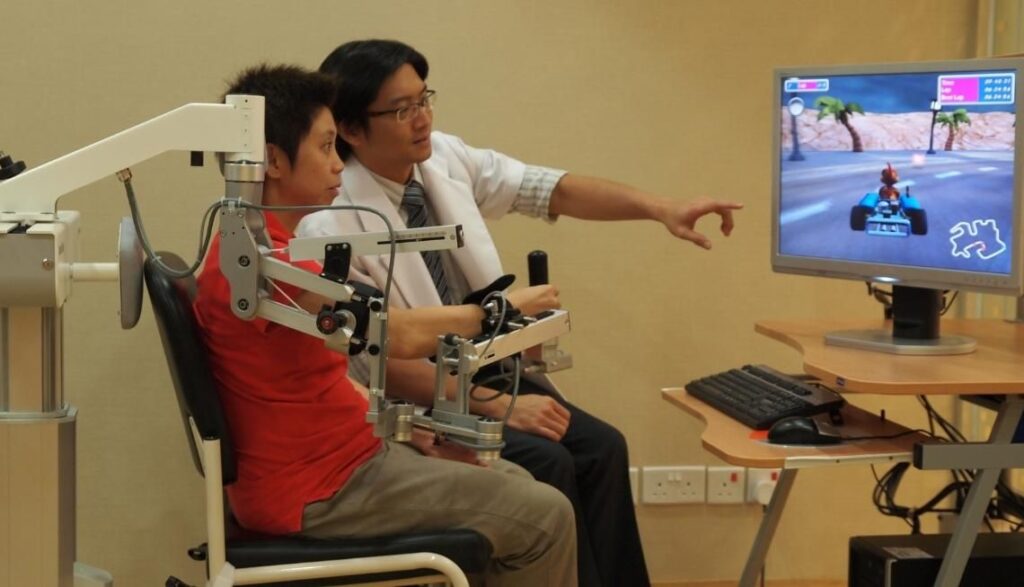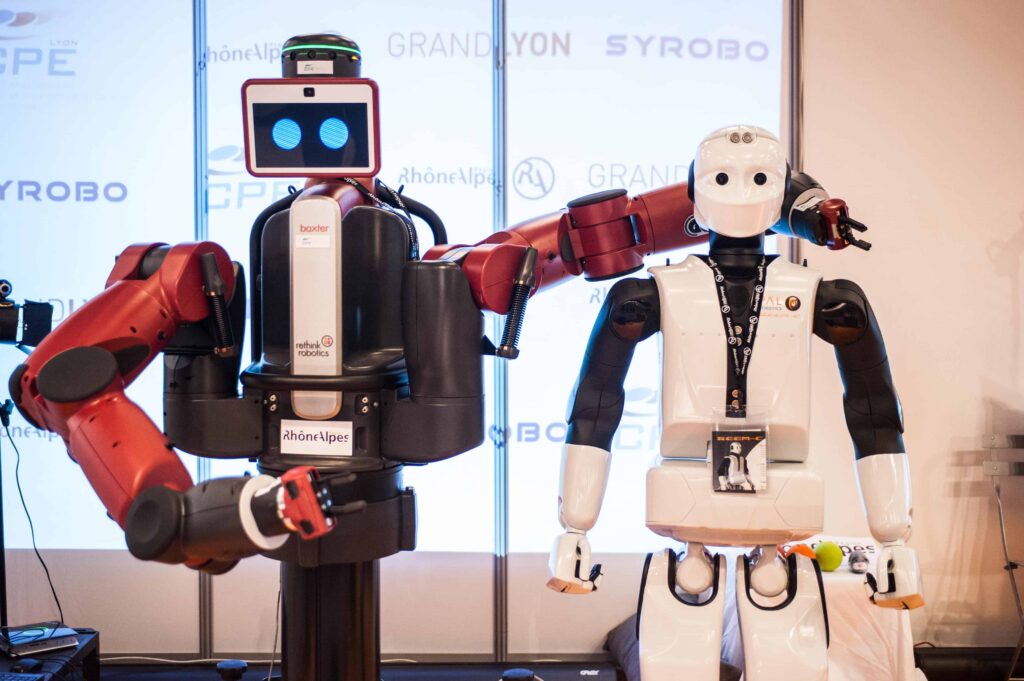In recent years, robotics has emerged as a game-changer in healthcare, revolutionizing medical practices and enhancing patient care. From surgical robots and robotic exoskeletons to telemedicine systems, robots are playing a significant role in advancing healthcare. In this article, we explore the diverse applications of robots in healthcare settings and their transformative impact on the industry.
Contents
1. Surgical robots & Exoskeletons
Surgical robots have revolutionized the field of surgery, enabling minimally invasive procedures with enhanced precision and dexterity. Surgeons can control robotic arms equipped with specialized instruments, providing greater control and maneuverability. These robots can perform complex procedures with minimal invasiveness, resulting in reduced scarring, shorter hospital stays, and faster recovery times.
Robotic exoskeletons are wearable devices designed to assist or augment human movements. These devices are used in rehabilitation settings to help patients regain mobility and functionality. Robotic exoskeletons can provide support and assistance during physical therapy, enabling patients with mobility impairments to practice walking and performing daily activities. Additionally, exoskeletons are being explored for applications in assisting healthcare professionals with heavy lifting and reducing the risk of musculoskeletal injuries.
2. Telemedicine Systems and Assisted Rehabilitation
Telemedicine systems, powered by robotics and communication technologies, are transforming healthcare delivery, especially in remote or underserved areas. These systems enable patients to access medical expertise remotely, bridging the gap between patients and healthcare providers. Telemedicine robots equipped with cameras and sensors allow healthcare professionals to conduct virtual consultations, monitor patients’ vital signs, and provide real-time assistance, expanding access to healthcare services and improving patient outcomes.
Robotic-assisted rehabilitation devices are used to aid patients recovering from injuries, strokes, or neurological conditions. These devices assist patients in performing repetitive movements and exercises with precision, ensuring consistent therapy sessions. Robotic rehabilitation systems provide objective data on patients’ progress, allowing healthcare professionals to tailor treatment plans and track improvements effectively.
Robots are increasingly employed in pharmacy settings to automate medication dispensing processes. Robotic systems can accurately and efficiently manage medication inventory, package medications, and dispense prescriptions. This automation reduces the risk of errors, enhances medication safety, and enables pharmacists to focus more on patient counseling and clinical services.
3. Prosthetics and Elderly Care
Robot-assisted surgeries have gained prominence in various specialties, including urology, gynecology, and cardiac surgery. Surgeons utilize robotic systems to perform precise movements with enhanced visualization and dexterity. These systems offer advantages such as reduced blood loss, smaller incisions, and improved surgical outcomes. Surgeons remotely control robotic arms to perform intricate procedures, making surgeries less invasive and enabling faster patient recovery.
Advancements in robotics have led to the development of advanced prosthetic devices that mimic natural limb movements. Robotic prosthetics offer increased functionality, allowing users to perform complex tasks with greater ease and precision. These devices can be controlled using muscle signals or brain-computer interfaces, providing a more intuitive and seamless integration between the user and the prosthetic limb.
Robots are being employed to provide support and assistance to the elderly population. Social robots equipped with artificial intelligence and natural language processing capabilities can engage in conversations, monitor vital signs, and remind patients to take medications. These robots also assist in fall detection, emergency response, and reducing social isolation among the elderly, promoting overall well-being and independence.
Conclusion
Robotics is rapidly transforming the healthcare landscape, introducing innovative solutions and revolutionizing medical practices. From surgical precision and rehabilitation support to remote consultations and pharmacy automation, robots are improving patient outcomes, enhancing efficiency, and expanding access to quality healthcare. As robotics technology continues to evolve, we can expect even more transformative applications, leading us toward a future where humans and robots collaborate to achieve optimal healthcare outcomes.




